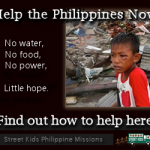Smith’s Delegation Meets With Typhoon Victims, Rescues Helicopter Crash Survivors

Philippines Country Representative Joe Curry walks with Congressmen Al Green, Trent Franks, and Chris Smith through areas affected by Typhoon Haiyan during a congressional visit to Leyte, Philippines. Photo Credit: Kent Truog
WASHINGTON, D.C. – Congressman Chris Smith (NJ-04) and his bipartisan congressional delegation (CODEL) which traveled to the region devastated by Super Typhoon Haiyan, locally called Typhoon Yolanda, meeting with victims of the typhoon, emergency workers and U.S. and Filipino government officials, are set to depart the Philippines today.
“It’s mind numbing and heart numbing,” Smith said. “I’ve been to many places around the world when there have been catastrophic typhoons hurricanes, earthquakes and even more. It is powerful to witness the Filipino people’s resiliency in the face of devastation, in the face the loss of life.”
Smith, who is joined on the trip by Reps. Al Green (D-TX-09), and Trent Franks (R-AZ-08), saw for himself the typhoon’s devastation in Tacloban City and surrounding areas in Leyte.
Upon arrival, the Smith delegation met with Filipino Foreign Affairs Sec. Albert del Rosario. Smith expressed to him that the U.S would continue working with his government to bring life-saving supplies. The American and Filipino peoples have had an enormous bond for “well over a century,” Smith said.
Smith and the delegation toured much of the devastation and at some staging areas assisted in handing out clean water kits and other basic supplies to help mitigate the spread of water borne diseases.
“It’s all about generosity,” Smith said. “We saw with Superstorm Sandy in my own state the devastation and the U.S. government—federal government—had our back because we needed it. Friends here in the Philippines, they have to know that we have their backs and I think that’s what USAID is doing, CRS (Catholic Relief Services) and the other NGOs (non-government organizations) so that’s the message I take away from here.”

Cong. Smith, chairman of the House global health and human rights subcommittee, joins a clean water distribution line operated by Catholic Relief Services and U.S. Agency for International Development (USAID) to talk with victims of the typhoon. CRS distributed 520 hygiene kits at San Joaquin Catholic Church in the village of San Joaquin, outside of Palo on the island of Leyte. The kits include items like collapsible water jugs, water purification tablets and soap. Handing out hygiene kits are Congressmen Al Green (D-TX) in green shirt, and Chris Smith R-NJ blue/white striped shirt. Photo Credit: Jim Stipe/Catholic Relief Services
At one point, the U.S. Air Force C-130 Hercules the Smith CODEL was traveling in was diverted en route to pick up two survivors of a helicopter crash into Manila Bay. The C-130 crew, from Villamor Air Base, located the two passengers of the helicopter floating on the water and dropped flotation devices for them.
“I am extremely impressed with U.S. servicemembers performing such critical humanitarian work,” said Smith, who also had praise for the U.S. civilian workers.
“USAID is doing a wonderful job,” he said. “This is really a textbook example of how it should be done.”
Smith has working knowledge of on-the-ground disaster relief and response operations domestically and around the world—including during the 2004 Tsunami and most recently in New Jersey when parts of his congressional district were severely damaged by Superstorm Sandy.
As he was preparing to embark on the trip, Smith said there is value to “boots-on-the-ground” contact at disaster sites. Smith said, “You listen to the victims and talk directly to the people who are leading the humanitarian response efforts so you can see where there is an unmet need and how federal resources can help.”
A significant part of the trip was planned to spend time at emergency humanitarian staging areas of Catholic Relief Services, World Vision and other relief agencies that work out the logistics of delivering food, clothing and other essentials to those who need it the most.
In addition to his concerns about the threat of health epidemics, Smith is also working to combat an increase in human trafficking which often takes place after a natural disaster. Smith, who serves as the chairman of the House subcommittee that oversees global health and is also the author of our nation’s landmark anti-human trafficking legislation, the Trafficking Victim’s Protection Act, said “there are precautions that can and must be taken immediately to protect young women and children who have been rendered homeless by the typhoon. Tragically, experience shows there are thugs and predators who will deceive and coerce victims into life of human trafficking.”
The former U.S. territory, and one of the U.S.’s closet allies in the Far East, suffered a direct hit by one of the most powerful storms ever recorded in history on November 8. More than 4,000 people were killed and many more thousands were injured. An estimated 4.4 million people have been displaced. The food supply has been hit hard with the typhoon damaging over 375,000 acres of local agriculture, including staples like rice, corn, and other vegetables. The U.N. Office for the Coordination of Humanitarian Affairs estimates that one million farmers and fishermen have lost their livelihoods, no longer able to contribute to the food supply.








